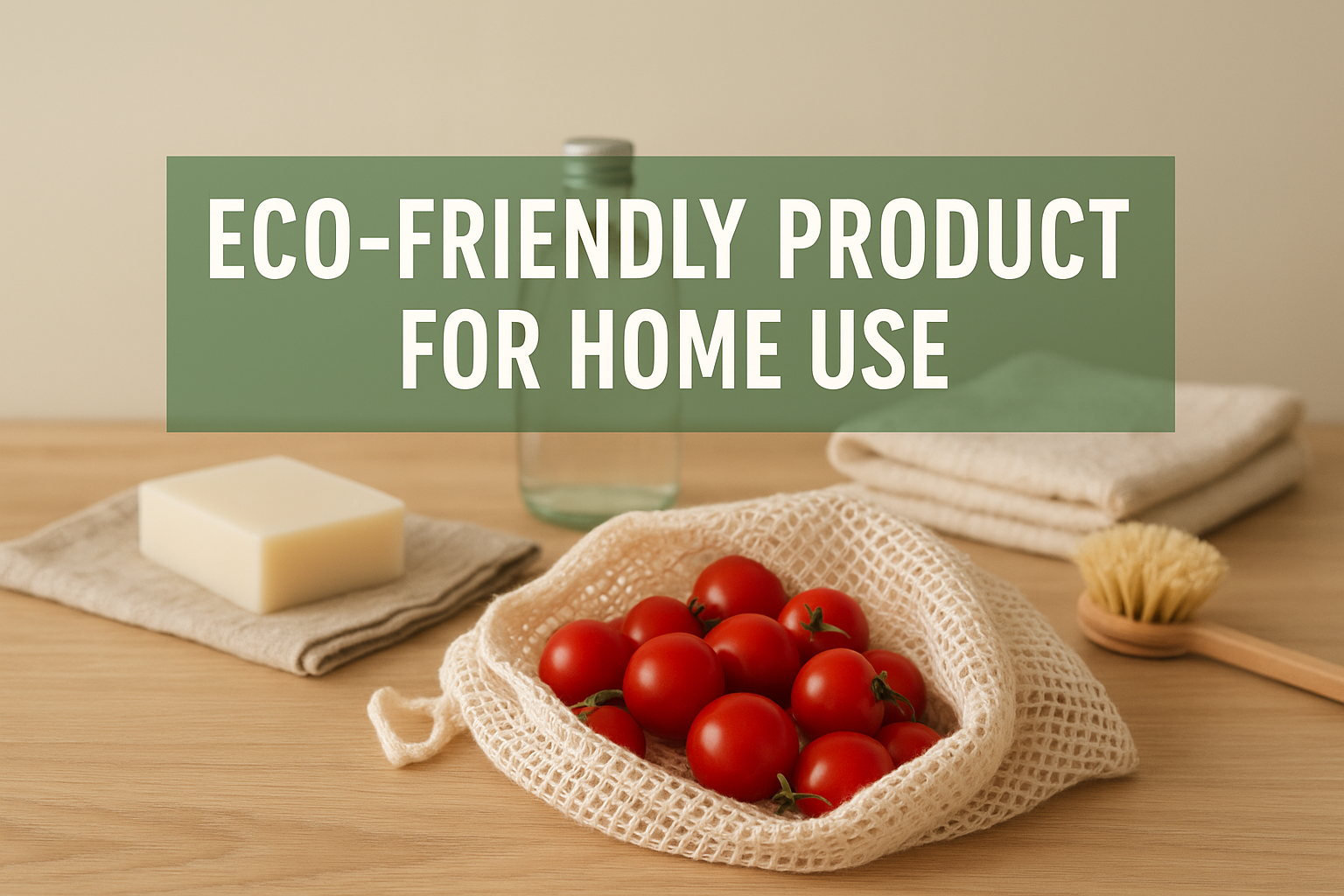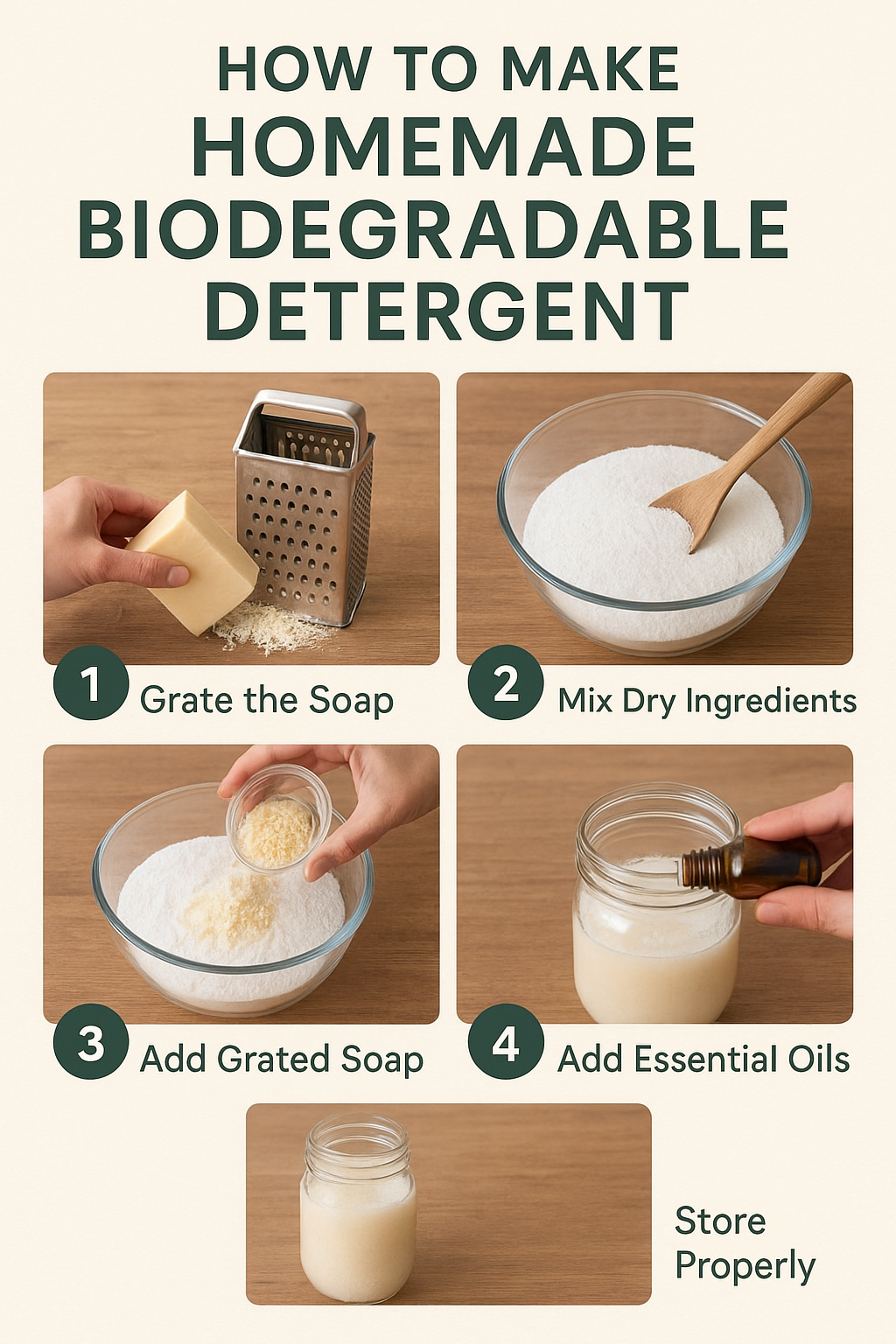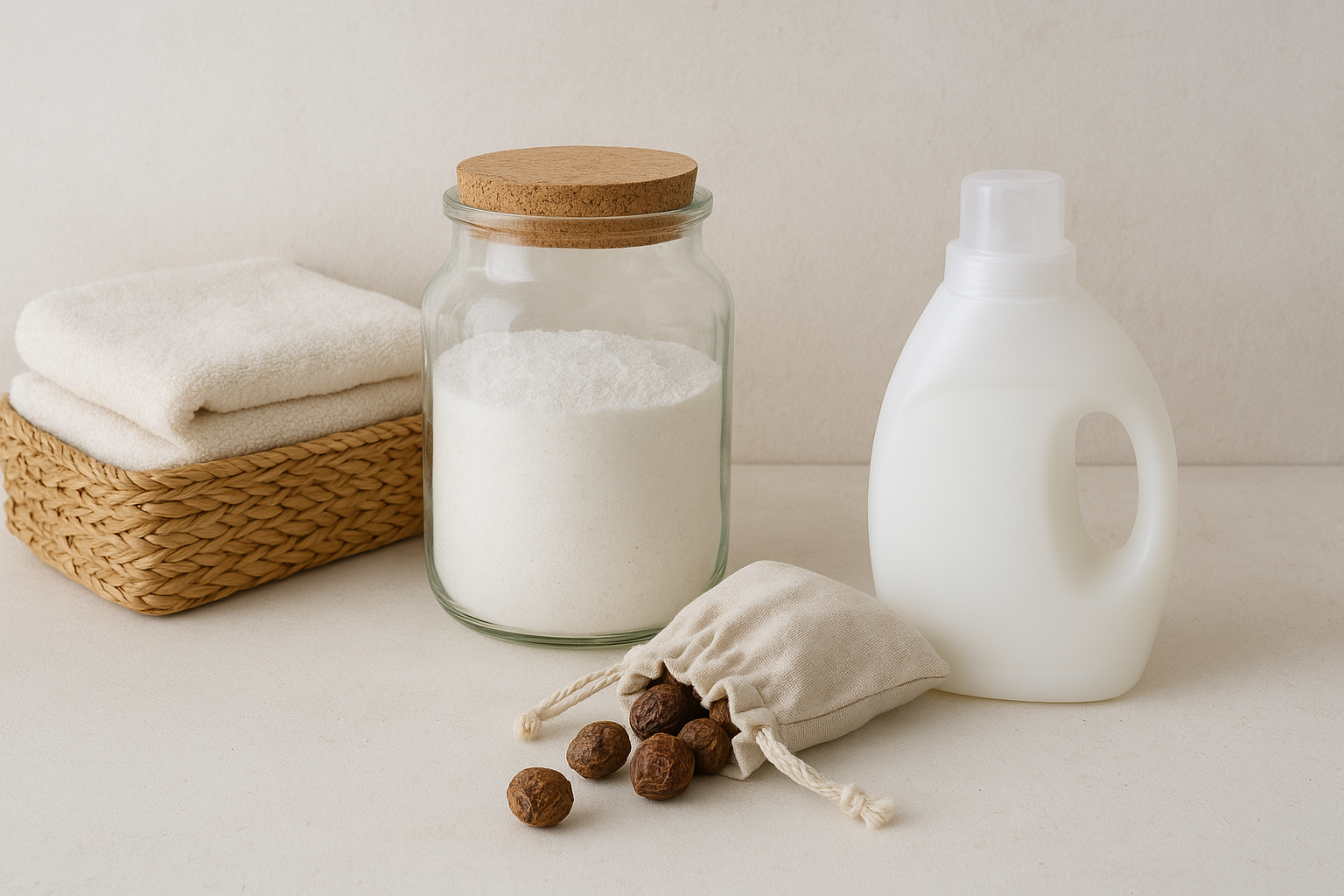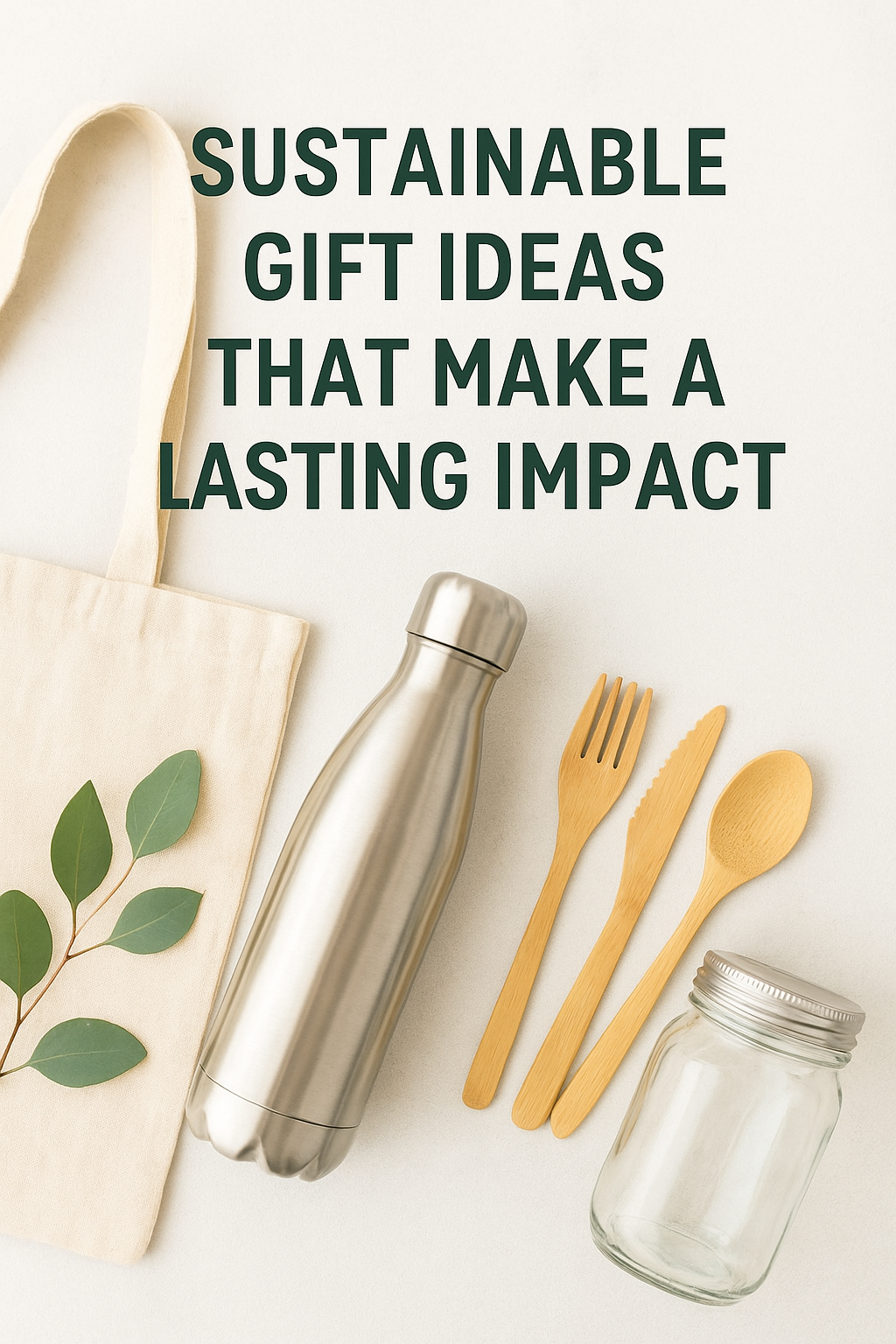
We spend most of our lives at home, and the choices we make here directly impact our health and the environment. According to the UN, households generate about 60% of global greenhouse gas emissions through daily consumption patterns. That’s huge but the good news is that small, conscious changes can make a massive difference.
In this blog, let’s explore some of the best eco-friendly products for home use that are easy to adopt, budget-friendly, and highly impactful. Step by step, you’ll see how making sustainable swaps can turn your home into a healthier and greener space.
Why Choose Eco-Friendly Products for Your Home?
It’s easy to wonder: “Why bother switching to eco-friendly items when my regular ones work just fine?” The answer lies in the bigger picture.
- Reduce pollution → Plastic waste is one of the biggest threats to oceans, with 8 million tons of plastic dumped annually. By choosing reusable and biodegradable products, you help cut that number down.
- Protect your health → Eco-friendly cleaning and personal care products contain fewer toxins and harmful chemicals, which means cleaner air and safer living spaces.
- Save money in the long run → While some sustainable products cost more upfront, they often last longer—helping you save in the future.
- Support green businesses → Every eco-friendly purchase encourages companies to invest in sustainable production.
Transitioning doesn’t have to be overwhelming. Start with one product at a time, and soon, you’ll notice a big shift in your lifestyle and your footprint.

Eco-Friendly Cleaning Products
Cleaning products are often filled with chemicals that pollute waterways and harm wildlife. But the good news? There are eco-friendly alternatives that work just as well—sometimes even better.
- Biodegradable detergents → These break down naturally, keeping your clothes fresh while being safe for rivers and oceans.
- Refillable cleaning sprays → Instead of buying new plastic bottles every month, just buy refills and reuse your spray bottle. Studies show refill systems can reduce packaging waste by 70%.
- Eco sponges & brushes → Regular sponges are made of plastic that never decomposes, but natural ones (like coconut husk or loofah) are compostable.
Transition Tip: Next time your cleaning spray runs out, don’t buy a new bottle—simply switch to a refill. Small steps like this build into lifelong eco-habits.
Eco-Friendly Kitchen Products
The kitchen is often the biggest source of single-use waste in any household. Luckily, it’s also the easiest place to go green.
- Reusable beeswax wraps → Replace cling film with beeswax wraps that can last up to a year. Imagine how many rolls of plastic wrap you’ll save!
- Bamboo or steel straws → Did you know that 500 million plastic straws are used every day in the U.S. alone? Switching to bamboo or steel can drastically reduce that waste.
- Compost bins → Instead of sending food scraps to landfills (where they release methane), compost them into nutrient-rich soil for plants.
- Stainless steel water bottles & lunch boxes → They keep food fresh, last for years, and stop thousands of plastic bottles from entering landfills.
Smooth Transition: Swap just one disposable kitchen item (like cling film or plastic bottles) for a reusable option. Over a year, you’ll notice how much less trash your kitchen produces.
Eco-Friendly Bathroom Essentials
Bathrooms may be small, but they generate a surprising amount of plastic waste. Switching to eco-friendly options here is both simple and powerful.
- Shampoo and conditioner bars → One shampoo bar can replace three plastic bottles and last longer. Plus, they’re travel-friendly.
- Bamboo toothbrushes → Over 1 billion plastic toothbrushes are thrown away each year in the U.S. alone. A bamboo one biodegrades naturally.
- Reusable cotton rounds → Think about how many cotton pads you throw away in a year. Reusable ones can be washed and used hundreds of times.
- Eco-friendly soaps → Organic and cruelty-free soaps are gentler on the skin and safer for the environment.
Transition Tip: Start with a bamboo toothbrush it’s affordable, effective, and one of the easiest swaps to begin with.
Eco-Friendly Living Room & Home Décor
Your living room is where you relax, but it can also reflect your eco-conscious lifestyle.
- Energy-efficient LED bulbs → Switching to LED bulbs saves up to 80% of energy compared to regular bulbs and they last longer.
- Recycled furniture & décor → Many brands now create stylish furniture from reclaimed wood or recycled plastic. This gives old materials new life.
- Organic cotton throws & cushions → Soft, durable, and made without harmful pesticides.
- Houseplants → Beyond beauty, plants can improve indoor air quality by up to 25%, according to NASA studies.
Transition Tip: Replace your regular bulbs with LEDs as they burn out. It’s an easy, budget-friendly step with instant savings.
Tips for Choosing Eco-Friendly Home Products
The sustainable market is booming, but not every product labeled “eco-friendly” truly is. Here’s what to check before buying:
- Look for biodegradable or compostable tags
- Prioritize recycled or renewable materials
- Choose certified organic products when possible
- Support Fair Trade & cruelty-free brands
👉 Transitioning wisely ensures you avoid greenwashing and invest in products that actually make a difference.
🌍 The Long-Term Benefits of Eco-Friendly Products
At first, eco-friendly swaps may feel like a small step, but over time, their benefits multiply.
- Save money (reusables pay off in months).
- Create a toxin-free, healthier home for your family.
- Lower your household carbon footprint.
- Inspire your friends and neighbors to follow your example.
According to studies, if every household adopted just five sustainable swaps, we could cut global waste by 30% within a decade.
Conclusion
Adopting eco-friendly products for home use is not just about going green it’s about creating a healthier, smarter, and more responsible lifestyle. From your kitchen to your bathroom and even your living room, every corner of your home can become more sustainable with a few conscious choices.
Remember: sustainability is not about perfection—it’s about progress. Start small, stay consistent, and soon your home will become a model of eco-living.




